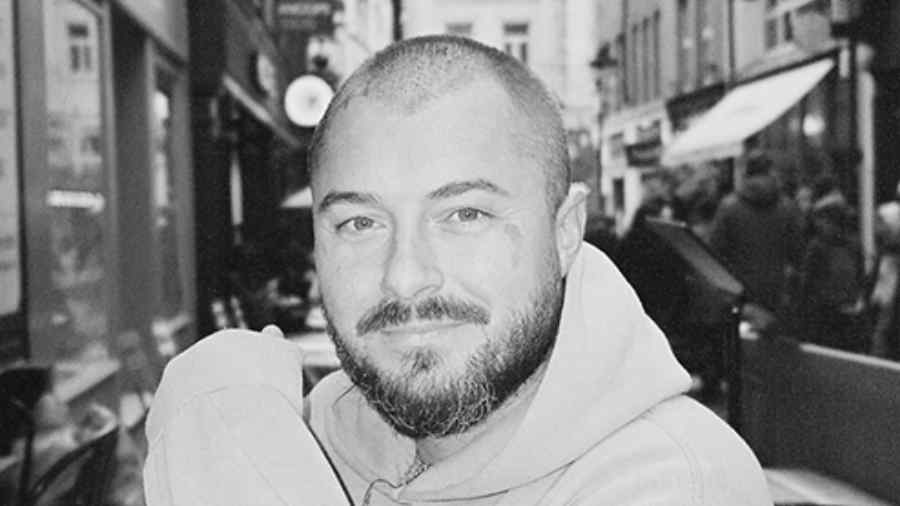Leigh Powis: The Visionary Director Redefining Modern Storytelling

In the realm of contemporary filmmaking, Leigh Powis stands as a distinctive figure whose creative vision continues to bridge the gap between cinematic storytelling and brand-driven visual art. From humble beginnings as a professional skier to becoming one of the most sought-after directors in commercial and narrative production, Powis’s journey reflects a rare combination of resilience, artistry, and emotional depth. His work effortlessly merges technical mastery with an intuitive grasp of human experience — creating visuals that resonate deeply with global audiences.
Early Life and Beginnings
Leigh Powis’s story began in the scenic surroundings of Chamonix, France, where his passion for adventure and visual expression took root. Growing up amidst the awe-inspiring landscapes of the Alps, he developed an early appreciation for movement, rhythm, and nature’s inherent drama — elements that would later influence his cinematic style. His childhood was not confined to one place; Powis also spent formative years in Gloucestershire, England, before moving to Whistler, British Columbia. These environments, each rich in visual and cultural texture, shaped his creative sensibility and provided the inspiration for his transition into visual storytelling.
Initially, Powis pursued a career in professional skiing. His athletic journey took him across mountains, snowparks, and international competitions. However, fate had a different path in store. After suffering multiple ACL injuries, his skiing career was cut short. Rather than allowing this setback to define him, Powis redirected his energy toward filmmaking. What began as a means of documenting his experiences on the slopes soon evolved into a profound artistic calling.
The Transition from Athlete to Director
The defining moment of Leigh Powis’s career was not his injuries, but his ability to reinterpret them as creative fuel. During his recovery periods, he immersed himself in film editing and post-production. He studied how light, sound, and motion combined to evoke emotion. His early work in ski films quickly gained attention for its unique visual rhythm and narrative flow — a style that blended authenticity with cinematic flair.
Powis’s transition from an athlete to a filmmaker was not merely a career change; it was an artistic evolution. The same precision and focus that skiing demanded found a new outlet behind the camera. His understanding of movement translated into a kinetic visual language that would later define his directorial identity.
Establishing a Visual Identity
Every great director develops a signature style, and Leigh Powis is no exception. His filmmaking stands out for its immersive storytelling, rich colour grading, and emotional authenticity. Whether capturing the adrenaline of sport or the quiet intimacy of human emotion, Powis’s work carries a cinematic fluidity that feels both organic and deliberate.
One of his distinguishing traits is his ability to merge the technical discipline of editing with the emotional pulse of storytelling. His background in post-production gives him an edge in visual composition, pacing, and rhythm — elements often overlooked in commercial filmmaking. Powis approaches every project with a narrative-first mindset, ensuring that even brand campaigns convey genuine emotion and meaning.
Breakthrough in Commercial Filmmaking
Leigh Powis’s career took a major leap when he transitioned from independent projects to high-end commercial productions. His directorial portfolio expanded rapidly, encompassing major brands such as Adidas, Oakley, Under Armour, Puma, Powerade, and HOKA. Each project reflected his cinematic touch — turning advertisements into powerful visual narratives.
For instance, in his Mach X campaign for HOKA, Powis showcased not just the athleticism of the subject but also the emotional drive behind performance. His direction went beyond product marketing; it celebrated human ambition, discipline, and identity. Similarly, his collaborations with Adidas and Under Armour balanced commercial appeal with artistic substance, proving that advertising could also be a form of storytelling.
Powis’s partnership with production companies like ProdCo and Stept Studios further solidified his position as a creative force. These collaborations gave him the creative freedom to experiment with visual tone, narrative structure, and innovative cinematography techniques — from handheld authenticity to sweeping aerial compositions.
Recognition and Industry Impact
Leigh Powis’s work has not only captured the attention of audiences but also earned acclaim across the global creative industry. His direction has been recognised with numerous awards, including Golds at the Clio Sports Awards, the CICLOPE Festival, and the 1.4 Awards — distinctions that reflect both technical excellence and storytelling innovation.
In an industry saturated with trends and formulaic production, Powis’s authenticity sets him apart. His approach focuses less on following the latest visual fads and more on crafting timeless stories. He prioritises character, emotion, and narrative coherence over spectacle — a philosophy that continues to influence younger filmmakers and content creators around the world.
The Artistic Philosophy of Leigh Powis
At the core of Leigh Powis’s artistry lies a simple yet profound philosophy: Emotion drives connection. Every frame he captures is guided by the pursuit of emotional truth. Whether he’s shooting a high-octane sports sequence or a contemplative moment of solitude, his goal remains the same — to make the viewer feel.
Powis often speaks about the importance of finding beauty in imperfection. His visuals are cinematic but grounded, polished yet raw. This balance gives his films an emotional realism that resonates deeply with audiences. In commercial contexts, this philosophy transforms traditional advertising into memorable, artful storytelling.
Key Projects and Collaborations
Over the years, Powis has directed several standout projects that showcase his range and creativity. Among them is Volem La Pilota, a short film celebrating FC Barcelona’s 125th anniversary. The film beautifully combines heritage, emotion, and identity — encapsulating the spirit of one of the world’s most iconic sports institutions.
Another highlight is his work with Oakley, where he explored the psychology of athletic performance and the internal battles faced by elite competitors. By weaving personal stories into product campaigns, he created emotional resonance that transcended simple marketing. His ability to extract authentic performances from athletes and actors alike demonstrates his strength as a storyteller who understands both movement and emotion.
Beyond commercials, Powis has also worked in narrative and short film formats. His credits as an editor include Clementine (2017), Joy (2015), and The Masquerade (2015), each reflecting his evolving sense of rhythm, texture, and tone.
Technical Mastery and Storytelling Craft
Leigh Powis’s filmmaking process is defined by an acute attention to technical detail. He treats every project as a full-spectrum creative experience — from pre-production storyboarding to post-production colour grading. His background in editing allows him to visualise final cuts before the camera even starts rolling, ensuring efficiency and coherence throughout the process.
Powis is also known for his innovative use of natural lighting, slow motion, and dynamic camera movement. His frames are often carefully constructed yet feel spontaneous, creating a sense of immersion. This balance of precision and instinct is what gives his work its distinctive vitality.
Influence on Modern Advertising
The influence of Leigh Powis extends beyond film festivals and award circuits. He has played a vital role in shaping the aesthetics of modern commercial filmmaking. In an age where attention spans are short and visual saturation is high, Powis reminds the industry that storytelling still reigns supreme.
Brands increasingly seek his expertise not just for his technical skill but for his ability to make products emotionally meaningful. He transforms campaigns into cinematic experiences — stories that evoke aspiration, authenticity, and identity. His films invite viewers to feel rather than simply consume.
Personal Traits and Creative Integrity
Those who have worked with Leigh Powis describe him as both passionate and precise. He brings the same discipline he once applied as an athlete into his filmmaking routine. Every detail, from the sound design to the rhythm of a cut, receives his full attention. Yet, he remains grounded, approachable, and deeply collaborative — qualities that make him a favourite among production teams and clients alike.
His life experience — overcoming injury, embracing change, and pursuing excellence — fuels his creative integrity. He embodies the belief that art is born not from perfection, but from persistence.
The Future of Leigh Powis
As the boundaries between commercial filmmaking, digital content, and cinematic art continue to blur, Leigh Powis stands at the forefront of this evolution. His future projects are expected to further bridge narrative depth with brand communication, exploring the emotional potential of visual storytelling.
With his background in sports, music, and human emotion, Powis is uniquely positioned to shape the next generation of visual culture. Whether through branded films, short narratives, or feature-length projects, his voice as a director continues to grow stronger, more refined, and more relevant.
Conclusion
Leigh Powis’s journey from the snowy peaks of Chamonix to the creative studios of global brands is a testament to the power of reinvention and artistic passion. His filmmaking is not confined by commercial boundaries; it thrives on emotion, authenticity, and human connection.
In every project he undertakes, Powis reminds us that storytelling remains at the heart of all great art. Through his lens, brands become storytellers, athletes become philosophers, and visuals become vessels of meaning. Leigh Powis is not just a director — he is a modern visual poet whose work continues to redefine what it means to tell a story in motion.



